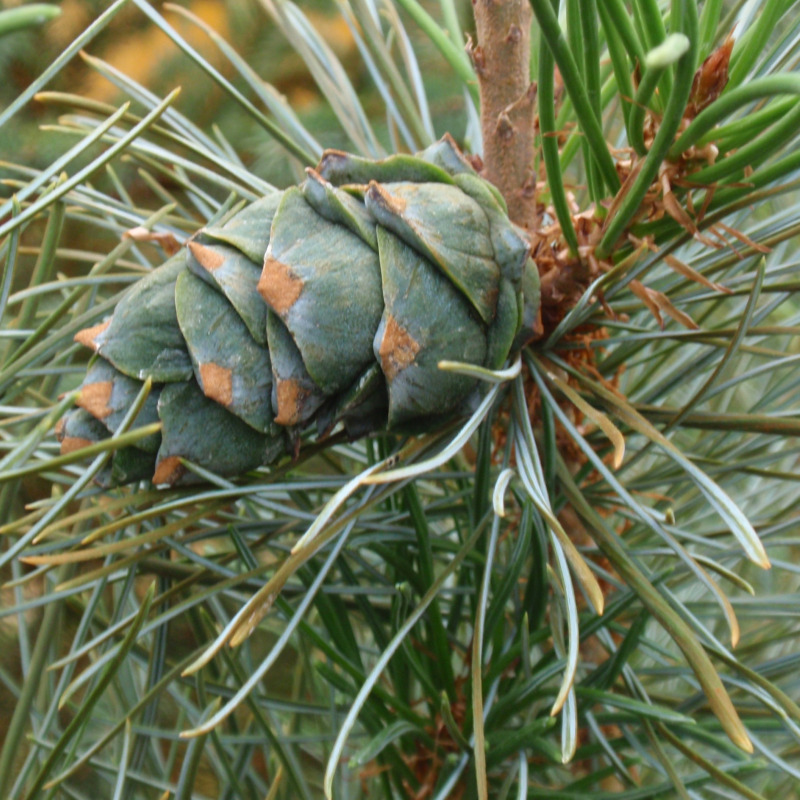Pinus × hakkodensis, as described in 1931 by Tomitaro Makino (1862-1957), in Flora of Japan (ed. 2), is commonly known as Hakkoda pine. It is a natural hybrid of the sub-alpine, Pinus parviflora var. pentaphylla and the alpine, Japanese mountain pine, Pinus pumila.
Description. Hakkoda pine is an evergreen coniferous, low, shrubby tree that grows to mature heights of 10 feet (3 m), similar to P. pumila, but with longer, twisted and coarser needles like those of P. parviflora. Most other characteristic are intermediate to the parent trees.
Distribution. This nothospecies occurs in the sub-alpine parts of Japan - southern Hokkaido, as well as central and northern Honshu, found growing at elevations of 3,300 to 5,500 feet (1,000 to 1,700 m) above sea level.
Hardy to USDA Zone 6 - cold hardiness limit between -10° and 0°F (-23.2° and -17.8°C).

